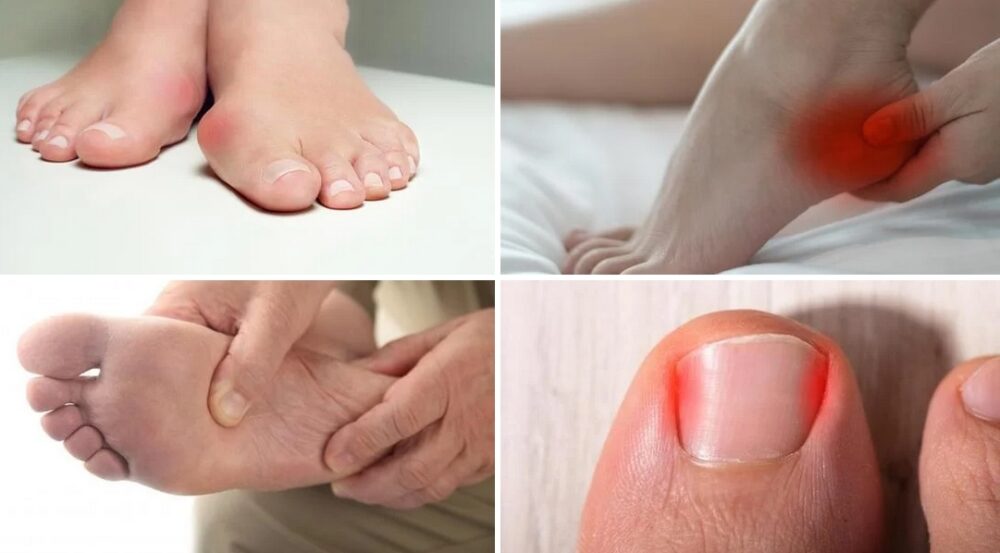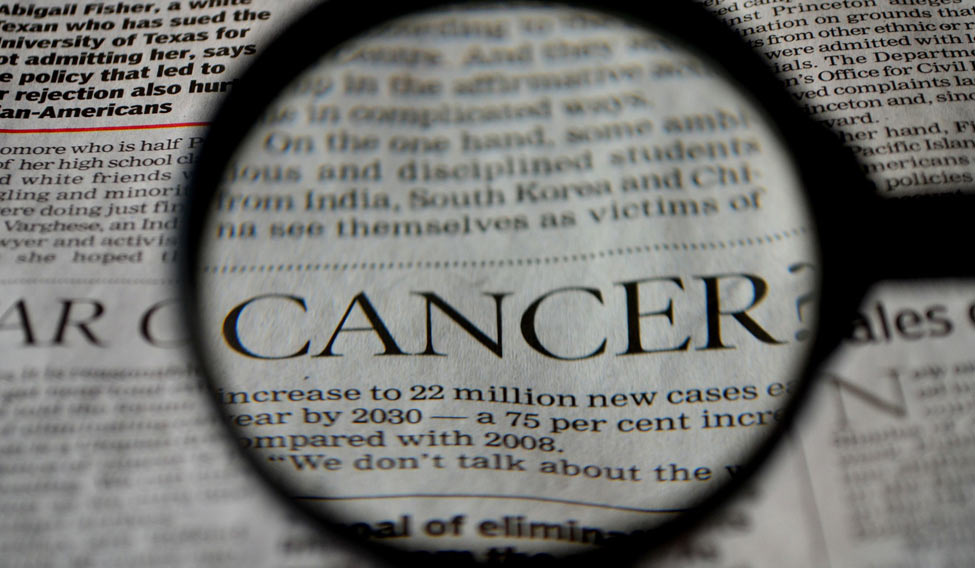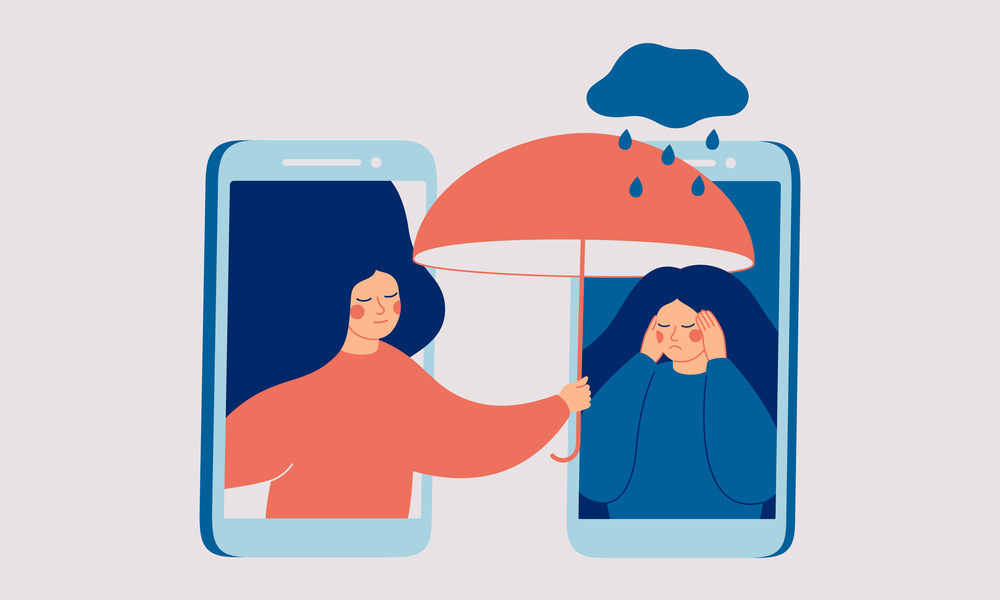The foot is one of the most important parts of the body as it does a lot of heavy work. People need it to walk, stand, jump, run, and a lot more. Without the feet, life would be a lot different and a whole lot harder.
But in doing all these, the foot can get injured or stressed, causing pain and suffering. If anyone is suffering from foot problems, the best thing to do is look for immediate medical help. But of course, they need to understand some common foot conditions to know what to look for. Here are some of them:
1. Foot Fungus (Athlete’s Foot)
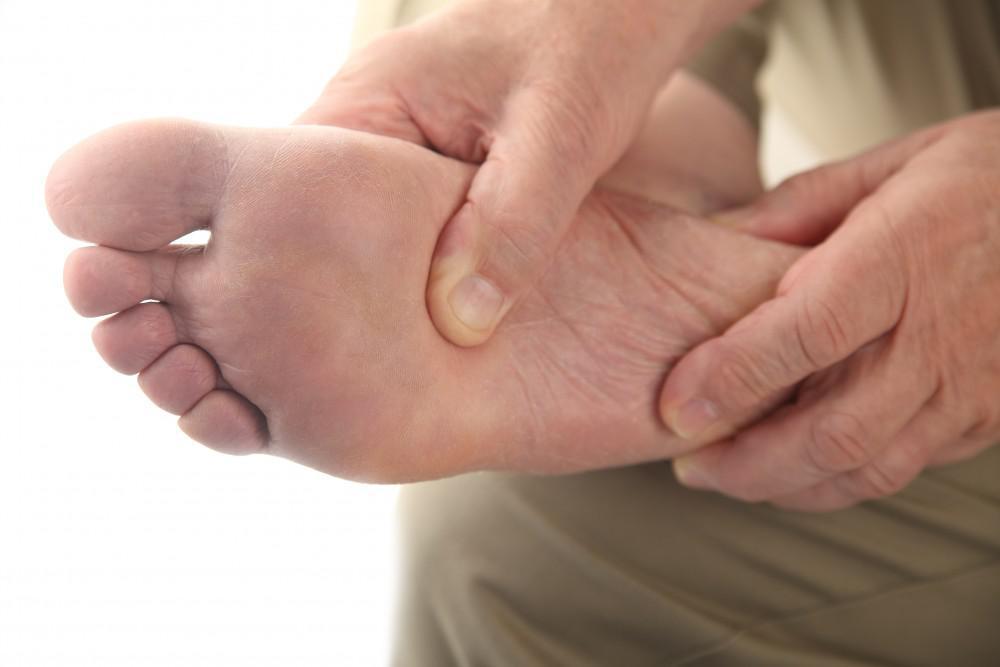
One of the most common foot conditions is the athlete foot, caused by fungi. It often affects the skin between the toes and may cause scaly skin or rashes. Athlete’s feet can also spread to the soles of their feet and make it hard for the affected person to run around freely because there would be a lot of itching and burning sensations.
Common symptoms of athlete’s foot include red or white skin between the toes; scaly skin; itching; burning sensation; blisters. When the soles of the feet are affected, the person might also see cracked and peeling skin, sores that may bleed or ooze fluid/pus, and thickened or discolored toenails.
Cause
The fungi that cause an athlete’s foot are mostly found in gyms, swimming pools, and locker rooms. But any place with damp surfaces can serve as a breeding ground for these fungi that cause athlete’s foot.
Treatment
The best home remedy for an athlete’s foot is to keep the feet warm and dry. There are also antifungal treatments such as powders, lotions, and sprays. There are also oral antifungals such as tablets for severe cases of athlete’s foot.
2. Blisters And Corns
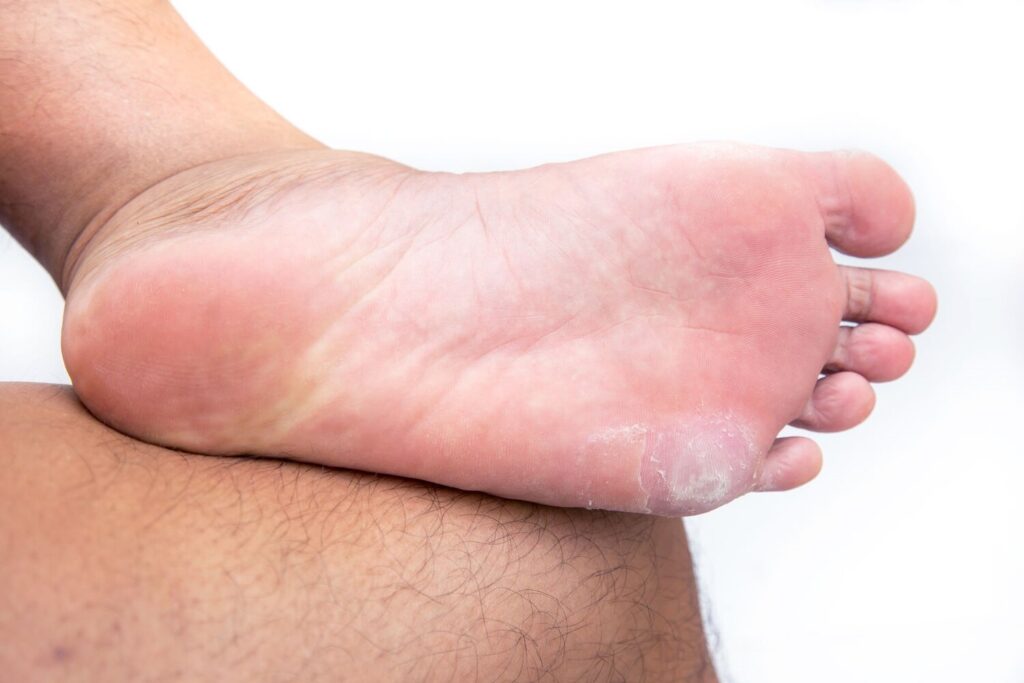
Blisters are fluid-filled bubbles with what appears to be a top and bottom. They often form on the hands but can show up anywhere on the body, especially the feet.
Corns are overgrowths of dead skin, which usually cover areas of friction or pressure that have occurred.
Causes
Blisters and corns appear as a result of a number of factors. They are often associated with conditions such as athlete’s foot but can also be caused by poorly fitting shoes or fungal infection.
Treatment
Home treatment for blisters and corns is only possible if they have not burst. If a blister has ruptured, seek medical attention. Treatment for blisters and corns usually involves minor surgery to remove the dead skin.
3. Plantar Fasciitis
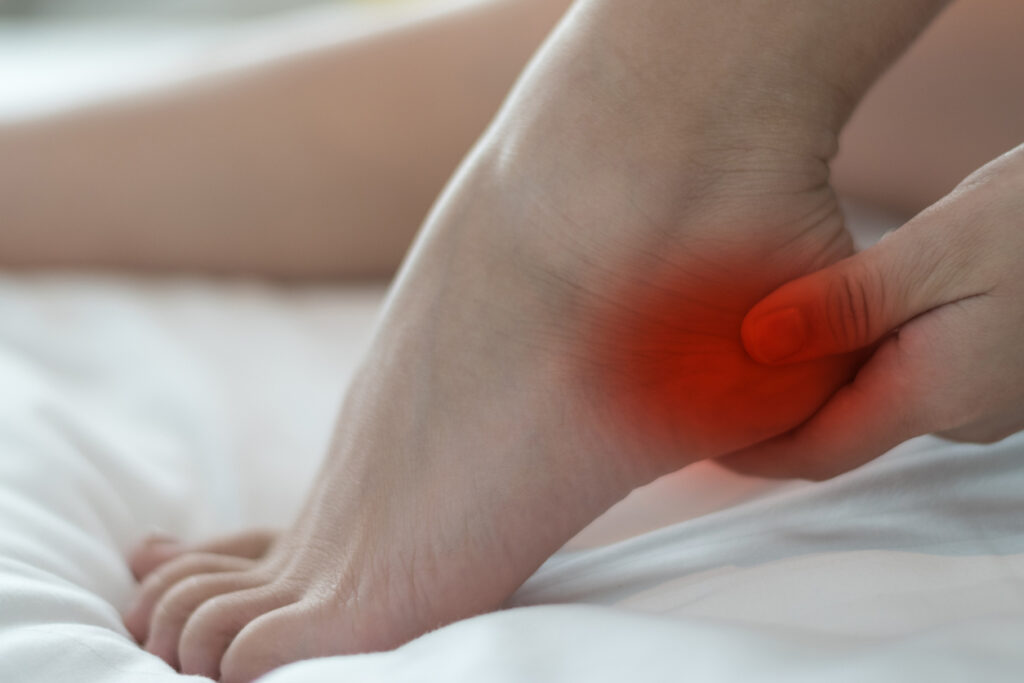
When the ligament that connects to the heel bone and supports the arch of your foot is repeatedly stressed, it will become inflamed. This causes pain in the heel area that can feel better with rest or worse with continued activity. Plantar fasciitis is most common among runners and those who wear high-heeled shoes.
Causes
Plantar fasciitis has no proven cause yet. However, there are risk factors that come with this condition.
Prolonged periods of standing or walking on hard surfaces are considered some of the main causes of plantar fasciitis. Other factors include; being overweight, athletes having flat feet, weakened muscles in the legs, high heels that strain the legs, and low arches.
Treatment
It is advised to take a break from activities that cause pain. If you continue with your activity, it will worsen the condition and increase symptoms. The following are ways to treat plantar fasciitis.
Applying ice on the heel for about 20 minutes every 3 hours can help reduce inflammation in your heel. You can also use plantar fasciitis night splints. They will help stretch the ligament when you are sleeping and give your foot a chance to relax when you do not have to walk on it.
Other activities that can help relieve pain include; resting, applying a heating pad, raising the heels with extra padding underneath them. For more tips you can visit Integrated Orthopedics for a more indepth list.
4. Bunions
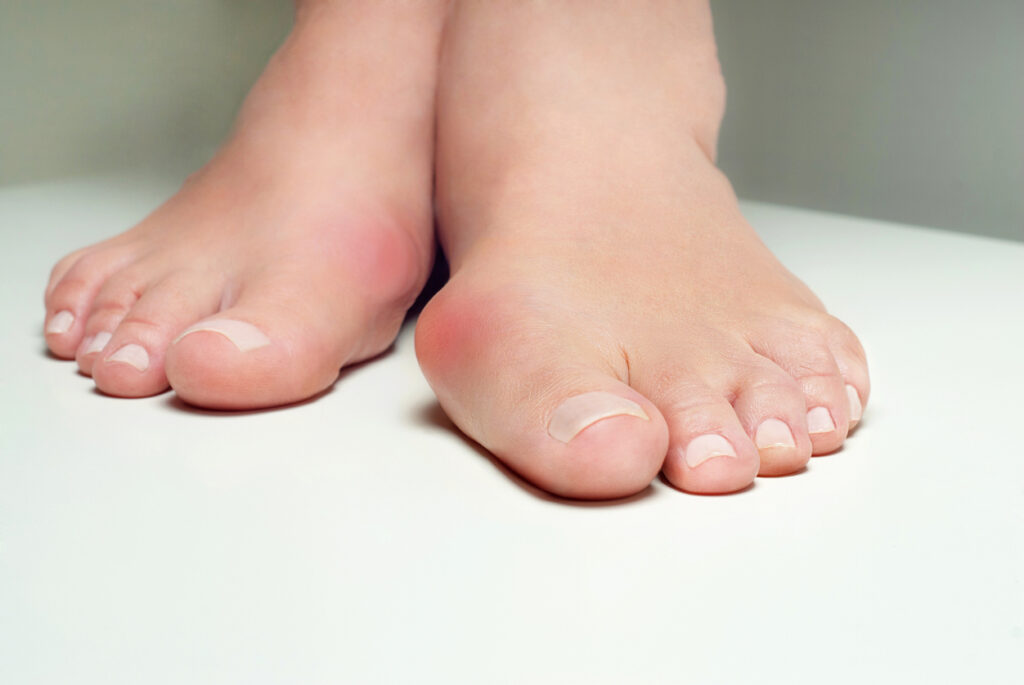
Bunions appear like a bump on the side of the big toe. This bump rubs against a person’s shoes, making walking painful. This condition often affects women more than men. Doctors call this condition Hallux Valgus.
Pain, soreness, or tenderness around the big toe area are early warning signs of a bunion. Other signs are redness and swelling of the bunion and bony bumps on the side of the big toe, and pain and swelling at night.
Sometimes a bunion can be distinguished by a bump that protrudes next to the big toe. This bump often appears as a person reaches middle age.
Causes
If a person spends several hours wearing tight shoes, the bunion can develop. Having flat feet is another cause of bunions. Another cause is having an inherited structural defect which causes the big toe to lean towards the second toe.
Treatment
Bunions can be treated with cortisone injections, night splints, and surgery. The toes are cut apart, the bunion is corrected, and the toe joints are tightened.
A bunionectomy is one of the most common surgeries performed in the U.S. A person can also wear wider shoes or hinged expandable shoes that allow extra room.
5. Ingrown Toenails
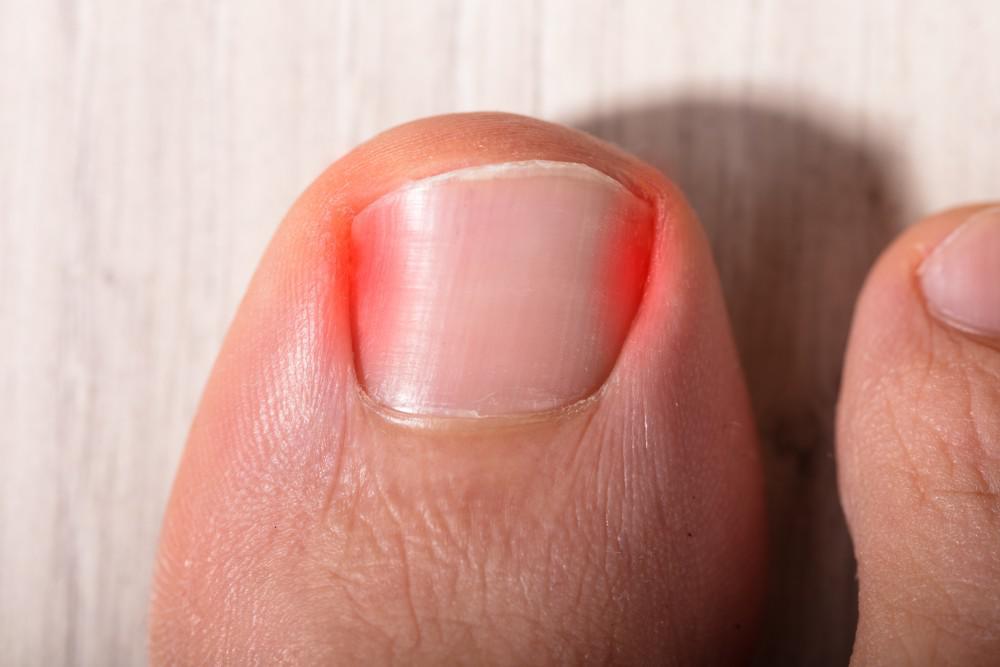
The toenails can be cut too short. The nail’s corner may invade the soft skin next to it, causing pain and infection. Redness around the nail, pain in the toe when walking, loss of toenails are signs that a person has ingrown toenails.
If these symptoms are ignored, they can cause more serious problems such as bone infections which can be extremely painful.
Causes
The most common cause of ingrown toenails is wearing wrong fitting shoes, improper nail trimming, and trauma on the feet.
Treatment
Prevention is the best way to avoid ingrown nails. Everyone should always carefully trim their toenails after they shower or bathe so they are softer and easier to cut. They can also soak the feet in antibacterial soap to help keep them clean. If these home remedies don’t help, the patient should see your doctor or podiatrist.
Conclusion
Many of these foot conditions don’t look serious at the start, but if ignored, they can get worse and severely damage your feet. They should be treated as soon as possible. If you have now or have ever had one of these conditions, they need to be taken care of now before they hurt more than just your feet.

